Howler (Philippines)
Not to be confused with the ACA Howler, a siren formerly produced by Alerting Communicators of America with the same name.
| Howler | |
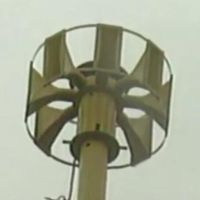
| |
| Company | Dennis Arriola
USAID/CRS? |
|---|---|
| Produced | 2012-present |
| Type | Omnidirectional Electromechanical |
The Howler is an electromechanical omnidirectional siren which primarily serves as a flood warning siren in areas of the Philippines. The siren was first produced by a man named Dennis Arriola, who took it upon himself to install a flood warning system to protect the community he lived in starting in 2012, with the first units going up in Marikina, NCR. Since then, the Howler has become somewhat of a local success in the Luzon area, and units are occasionally installed every few years, typically under a USAID/Catholic Relief Services (CRS) partnership.
Design
Marikina
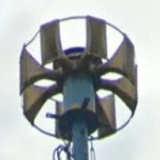
The Howler is a fairly simple siren at its core. Although the designs of units vary and are highly inconsistent, they all follow the same basic formula consisting of an 8-port rotor and stator, with the siren being driven by a motor beneath the rotor encased in a tall cylindrical housing, although some units are known to have considerably shorter motor housings. 8 horns are attached to the ports and help project the siren's sound. The units installed in Marikina have rectangular horns (with the short side facing upwards), with 2 circular frames attached to the top and bottom of each one holding them in place. Some units used rectangular horns with the long side facing upwards instead. These horns also varied in height from unit to unit, with some having taller horns and others having nearly square ones.
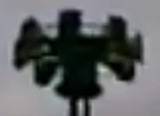
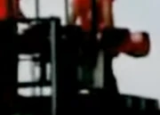
Additionally, some units only utilize 1 frame as opposed to 2, and in some cases, none at all. Howlers were apparently also offered without horns, as a unit in eastern Marikina lacks them entirely. Screens inside of each horn protect the siren's internals from debris. The horns and stator were typically painted yellow on these units, while the motor housing was either green or the same color as the stator and horns. Most of these sirens were mounted on large metal poles which seem to have also been built by Arriola. A cylindrical assembly above the stator topped with a rain shield allows the siren's rotor to receive air while also protecting it from the elements. A Howler unit, in favorable conditions, is able to be heard from around 3.5 km (2.17 mi) away. These sirens were hand-built and installed by Arriola, who, according to his daughter, was incredibly committed to his project. In one instance, Arriola was severely injured while casting a unit's rotors, costing his ability to walk properly. Despite this he was able to complete and install both it and several other units, proving his diligence.
USAID/CRS
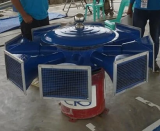
Recent Howler units differ in appearance compared to older ones and are typically branded with the USAID and CRS logos, also sporting a red, white, and blue paint scheme. These newer CRS units have been produced since at least 2016 and, while unconfirmed, seem to be built by USAID and CRS themselves, rather than Arriola. These units have motor housings which are shorter in height, and as opposed to their older counterparts they utilize rectangular horns with the long side facing upwards. Recent Howlers also lack the 2 frames holding the horns in place. These Howlers are far less common compared to older ones, with only a handful of units known to exist. While these sirens are obscure, they have made a name for themselves in the areas they serve and are a testament to Arriola's dedication.